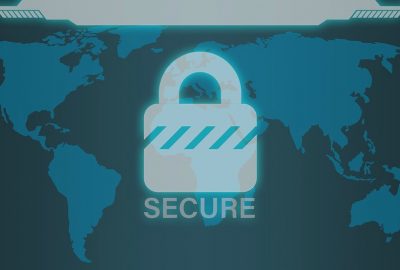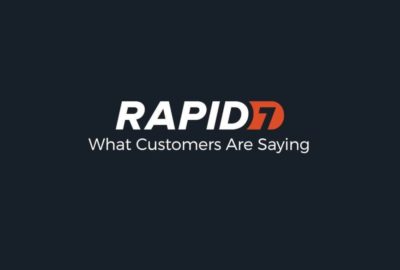 Companies around the world are encouraging their employees to work remotely. This is the best tool to address the risks that the COVID-19 pandemic poses to everyone. In some regions, authorities forced employees to make the transition to home offices. These are not only important but sudden and unprecedented changes. Because of this, ensuring the operational efficiency of your business means to strengthen the security of your data.
Companies around the world are encouraging their employees to work remotely. This is the best tool to address the risks that the COVID-19 pandemic poses to everyone. In some regions, authorities forced employees to make the transition to home offices. These are not only important but sudden and unprecedented changes. Because of this, ensuring the operational efficiency of your business means to strengthen the security of your data.
Currently, the main goal of all owners is to keep their business running. Because of this, businesses cannot ignore the risks that the home office poses to their data. Employees who access your network from their devices or unprotected networks become a threat. They may unknowingly threaten the security of your data by logging in at home. Even the comfort of being there can make them pay less attention to cybersecurity practices — or even ignore them altogether.
Reinforcing the Home Office security environment is vital.
The inability to verify if your employees are using secure devices can be bothersome. Issues such as excessive downloading of file shares are a problem. Even the use of collaboration tools and a general lack of data access control are a risk. Besides, all these can put your organization’s confidential information at risk.
The best thing you can do is to strengthen the security of your data and mitigate the risk of data breaches. It may sound difficult but start by paying attention to your strategies. It’s there that you can find out what should be your priorities. Exercising greater control over who is doing what and why is your prime concern. Considering this, try implementing the following measures to strengthen your cybersecurity:
Set alerts for login activities and audits for data access
Any suspicious login activity during home office work can be a sign of a security incident. Thus, we recommend you to set up activity alerts such as login attempts from many endpoints. Excessive logins in a short period of time or an unusual number of failed attempts are always suspicious. This will allow you to detect and investigate these events, acting against possible threats to your data.
In the case of corporate information, all accesses are sensitive. Especially when talking about confidential files: the most important information of the company. To cut potential risks from remote workers, you should be aware of all data access patterns. If any of them is different from their usual behavior, mark it as a red alert. Besides, if IT teams notice spikes in failed activities, they should take action. Start by assigning them with verifying said activities. Take special care in the case of individual users; it could be an account that has been compromised by a hacker.
Check downloads from the cloud and activity on all networked devices
 When we change from office work to the home office, it is tempting to download all the documents we are working on. Since we work from collaborative platforms such as Office 365 or Google Drive, it’s also very easy to do. Despite this, downloading content can pose a threat to the organization’s data. This is because employees can work with data from unpatched devices.
When we change from office work to the home office, it is tempting to download all the documents we are working on. Since we work from collaborative platforms such as Office 365 or Google Drive, it’s also very easy to do. Despite this, downloading content can pose a threat to the organization’s data. This is because employees can work with data from unpatched devices.
This means any data downloaded is at risk of being stolen. Thus, we recommend implementing automated audits in your IT environment. This way, you will know who is downloading, modifying or sharing what data from the cloud.
Another essential part of a remote work configuration is VPN sessions. However, data can be at risk if someone tries to access the corporate network from an infected device. Therefore, it is important to check successful and failed VPN logins. This should apply to all network devices, with a track on how much traffic each VPN session generates. This will allow your business to react to suspicious activity spikes.
Cut membership changes
New collaborative platforms such as Microsoft Teams make it easier to work from home. Yet, they can generate an extension of your employee’s access to specific tasks. Although it is convenient, sooner or later you may lose sight of whom you have granted access to and why. Of course, this goes against the principle of reducing privileges and creates unnecessary risks for your data. Monitoring the IT environment for changes in membership is a healthy practice. Remember to check the effective permissions to data; this way you ensure that users have only the minimum privileges they need to do their job.
Automation is key to the security of Home Office
Ultimately, the best strategy to control internal activities and security is the automation of activities. User behavior analyses are easily performed by a lot of automatizing software on the market. These tools not only speed up detection and investigation of possible incidents; they also allow you to set alerts on suspicious behavior patterns of your users. Besides, implementing these systems allows you to address security issues without sacrificing other tasks.
 However, they don’t take time from your control over changes to access rights; they offer alternatives to ensure that everyone has minimal but sufficient privileges. Finally, we recommend them because they identify which data is the most critical in your organization. By prioritizing security efforts, it will be easier to overcome security challenges.
However, they don’t take time from your control over changes to access rights; they offer alternatives to ensure that everyone has minimal but sufficient privileges. Finally, we recommend them because they identify which data is the most critical in your organization. By prioritizing security efforts, it will be easier to overcome security challenges.
Rapid7 InsightVM : A safe automation strategy
Our most effective recommendation is to invest in Rapid7’s InsightVM automation tool. This software can perform automated checks for your security breaches. InsightVM is an ideal option for detecting vulnerabilities, prioritizing and managing them. With a simple platform and a 100% customizable interface, your vulnerability identification will take a leap forward. This will allow you to focus your efforts on other areas such as production, performance and sales.
If you want to know more about InsightVM and other security tools, contact us. We are more than willing to help you build the most dedicated and secure IT environment you can in this worldwide contingency.



